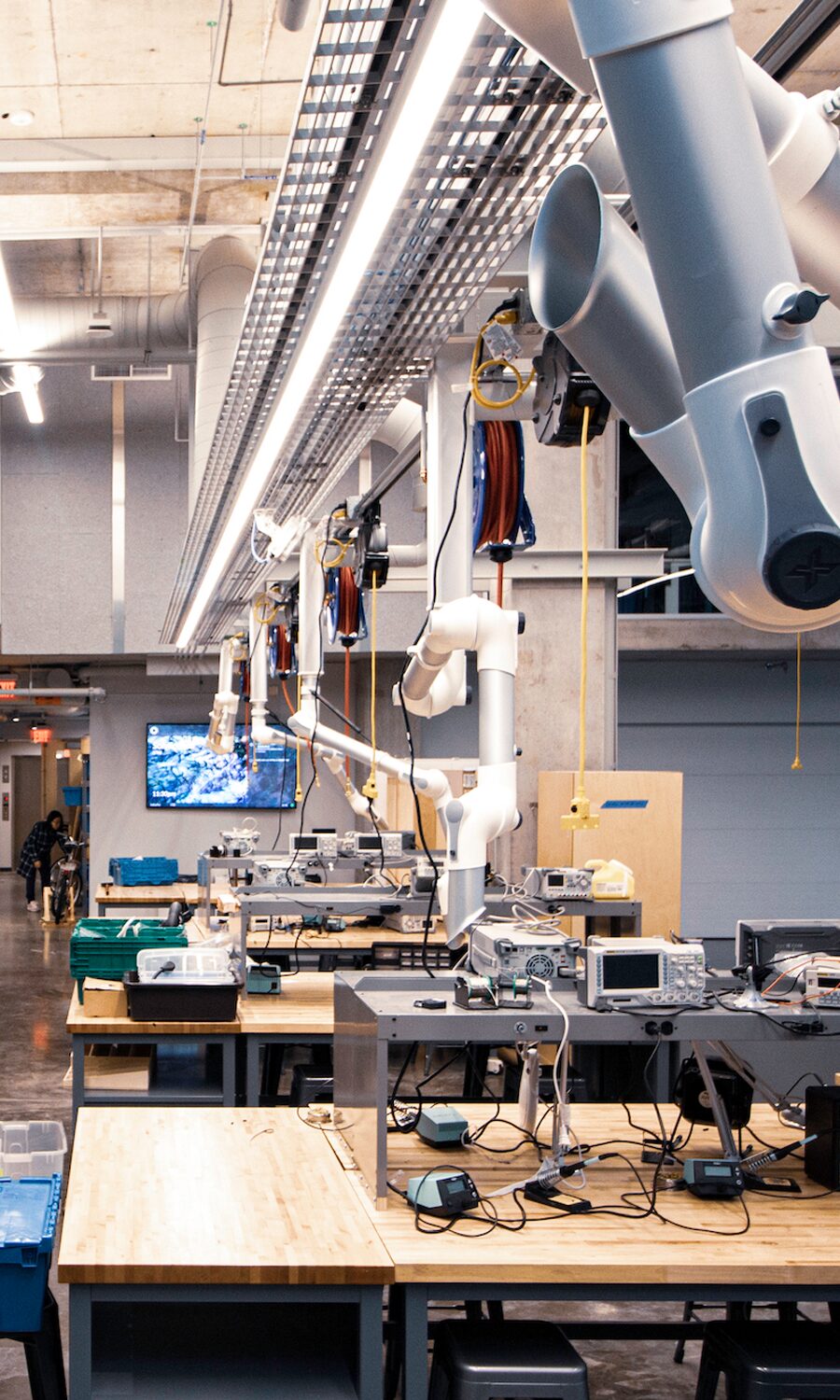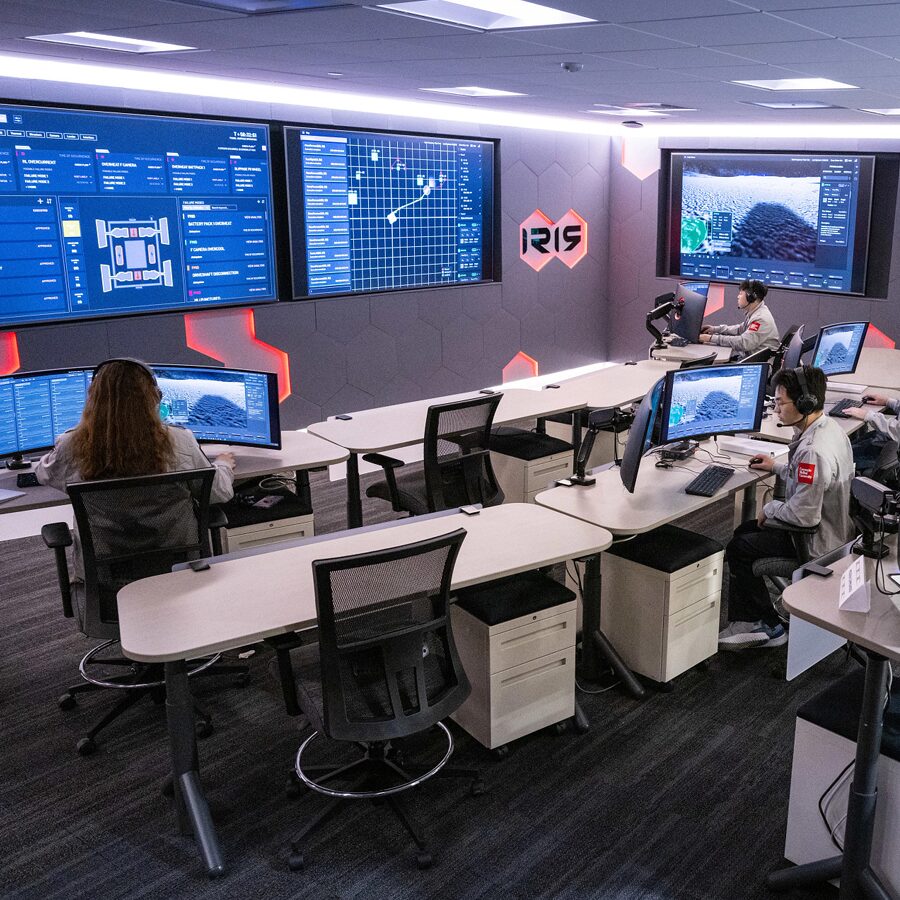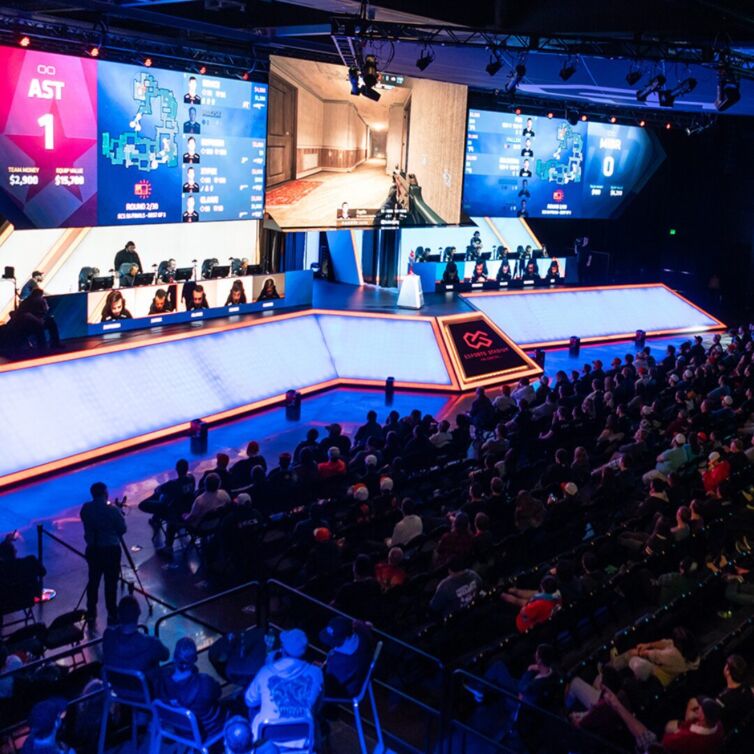Carnegie Mellon University: Robotics Innovation Center & Moonshot Mission Control Center Case Study
Exploring Carnegie Mellon University’s Continued Involvement in STEM Education and Research | May 6, 2024
As one of the leading research universities in the United States, Carnegie Mellon University continues to invest in its students. Innovative research and testing is backed by state-of-the-art spaces like the new Robotics Innovation Center (RIC) and the Moonshot Mission Control Center.
The facilities available on campus have a significant impact on the quality of research and overall education provided at the University.
BrightTree Studios acted as lead technology designer for both projects mentioned above, which gave us the opportunity to work alongside CMU to produce a top-of-the-line academic and research facility.
When it came to robotics, Carnegie Mellon wanted a space that made a statement about their dedication to the ongoing research efforts, while also being accessible to all students and the greater Hazelwood community.

Robotics Innovation Center
CMU has envisioned the RIC as a world-class destination for robotics and autonomous systems research and education that will attract talent, inspire future generations, build and strengthen community partnerships, and showcase innovation.
The 150,000GSF facility will be home to the College of Engineering – Mechanical Engineering & the School of Computer Sciences – Robotics Institute, the RIC gives students and researchers space for foundational research, testing, and development.
Located at Hazelwood Green – a former steel mill – the Robotics Innovation Center paves the way for Pittsburgh’s next industrial revolution.
Complemented by 1.5 acres of outdoor testing space, the RIC houses a 6,000GSF outdoor Drone Cage, a Motion Capture Laboratory, a 3-story High Bay testing and development space, and a 2,000GSF open-concept Wet Lab, among several other specialized spaces.
To allow for ease of testing, the high-bay space has a continuous vehicle pass-through and access to a loading dock.
Additionally, a large pool is available for testing use, opening up testing and development to water, land, air, and space environments.
An electronics shop, rapid prototyping space, and wood shop give students the ability to create as they test. A new Fabrication Skills Laboratory provides space for continued learning and development of new technologies.
To further facilitate advanced research, virtual testing and development environments will be available to students. Research and development will span across several industries including healthcare, education, national security, agriculture, retail and so much more.
Located in a prominent public area and visible to the community, the RIC provides opportunities for the community to engage with roboticists and to learn about robotics and artificial intelligence.


Moonshot Mission Control Center
Carnegie Mellon University’s Moonshot Mission Control Center provides state-of-the-art equipment to the crews of the Iris rover, MoonRanger, and future space missions.
Iris will be the smallest, first American, first university-built, and first student-built rover on the moon. MoonRanger, the first rover to search for evidence of water on the lunar surface, will explore the south pole after its scheduled flight to the moon.
The Moonshot Mission Control Center features several operator workstations, allowing crew members to plan and direct the movements of the rovers, monitor their data and images, and communicate with the rovers and their teammates.
Crew members will see telemetry, localization data and Fault List Evaluator for Ultimate Response (FLEUR) readouts at the workstations. The Control Center can be adjusted to fit future space missions.
The Flight Director has the ability to control the movements of the rovers from a dedicated workstation, sharing data to two large displays visible to the entire team.
A viewing room allows donors and other viewers to watch the mission team and rovers complete their missions. An intercom system allows for smooth communication between the viewing room and the control center.
The new Mission Control Center gives students & researchers space to facilitate data-visualization of ongoing rover missions and will make way for future lunar research through the University.

The adaptability of the control center ensures its readiness for upcoming missions and equips crew members with the tools to plan, direct, and monitor rover movements, all while maintaining seamless communication among team members.
The Moonshot Mission Control Center optimizes operator performance by providing real-time intuitive data visualization and facilitates streamlined decision-making processes.
As Carnegie Mellon continues to push the boundaries of scientific discovery, the Moonshot Mission Control Center stands as a testament to its unwavering dedication to advancing human understanding of the cosmos.




